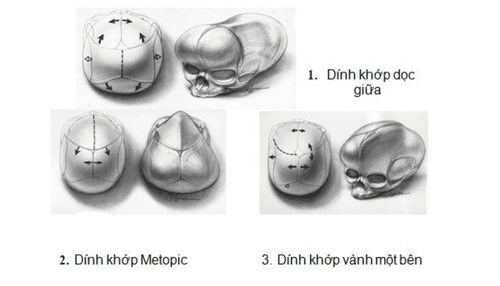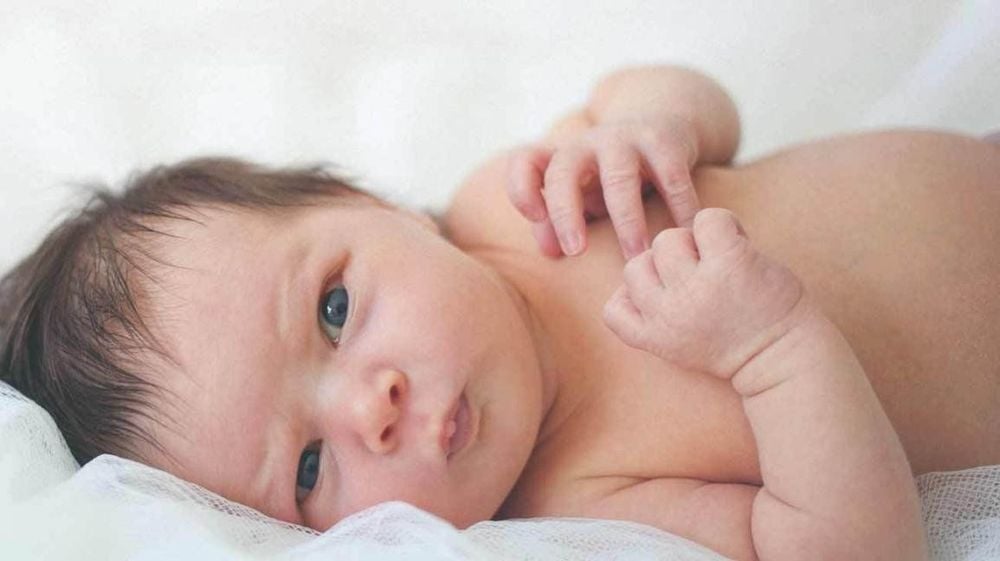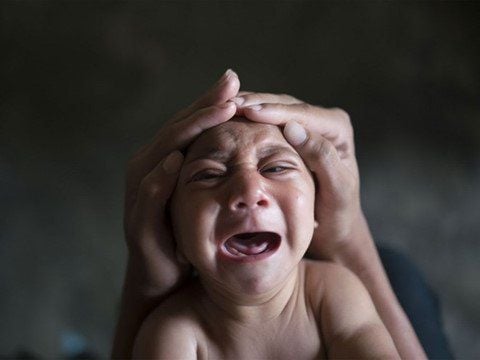This is an automatically translated article.
Early craniosynostosis in children is a relatively uncommon malformation. This type of malformation not only causes unsightly but also limits the development of the brain, severely affecting the physical and mental development of the child.
1. What is craniosynostosis in children?
Early craniosynostosis in children is a birth defect that occurs when the lines of the skull fuse together prematurely. Normally, these joints will attach when the child is 2 - 4 years old and only become fully attached after the age of 20.
There are two main mechanisms either by pathology of the bones of the skull (primary cranial fusion) or by the failure of the brain to develop prematurely, resulting in premature closure of the skull joints (secondary craniosynostosis causing microcephaly) ).
2. Types of early craniosynostosis

Hình ảnh một số loại dính khớp sọ
2.1 Coronal synostosis
Unilateral coronary synostosis begins at the ear and enters the longitudinal joint. This early closure of the joint leads to anterior deformity of the head. This can cause the child's forehead to flatten on one side, the eye socket on the affected joint to be pulled upward, and the nose to be deviated to one side. This condition, if not treated early, can lead to vision loss or even blindness in one eye.
2.2 Lamboidal synostosis
Premature closure of the femoral line leads to a posterior malformation of the head. This type of deformity can cause the head to distort backwards, the mastoid bone to protrude, and the ears to be displaced back. This condition is the rarest malformation and can be misdiagnosed as postural malformation.
2.3 Bicoronal synostosis
Occurs when both the left and right sides of the coronary synostosis are fused. Early closure of the two coronary joints leads to short and wide head deformity. This malformation causes the forehead and eyebrows to be flattened, raised and concave inward.
2.4 Metopic synostosis
The frontal synovial line begins at the nose and reaches the longitudinal joint. If this joint closes prematurely, it can cause a triangular head defect. This deformity causes the child to have a pointed forehead, a prominent bony ridge in the middle of the forehead, a triangular skull, and eyes that are too close together.
2.5 Sagittal synostosis
This is the most common type of early craniosynostosis, accounting for 3-5/1,000 births. When this joint closes prematurely, it can cause a boat-shaped head defect. Because the skull cannot expand to the sides, it is forced to grow forward and backward, thereby causing the baby's forehead to protrude, the head to be elongated forward and backward, and narrow in diameter.
3. Treatment

Độ tuổi tốt nhất để phẫu thuật là từ 3-6 tháng tuổi, lúc này xương sọ của trẻ còn mỏng nên dễ can thiệp hơn
Treatment is mainly surgical removal of the joints that are stuck, partial or complete reconstruction of the skull, creating space for the brain to develop and improving the aesthetics of the child. The best age for surgery is from 3-6 months old, at this time the baby's skull is still thin, so it is easier to intervene.
For simple cases of craniosynostosis, only 1 plastic surgery can bring good results. In complex cases of cranial ankylosing spondylitis, multi-stage intervention is often required, starting from 3 months of age until 10 years of age. Cranioplasty is a major surgery and usually lasts from 5 to 8 hours
Please dial HOTLINE for more information or register for an appointment HERE. Download MyVinmec app to make appointments faster and to manage your bookings easily.













